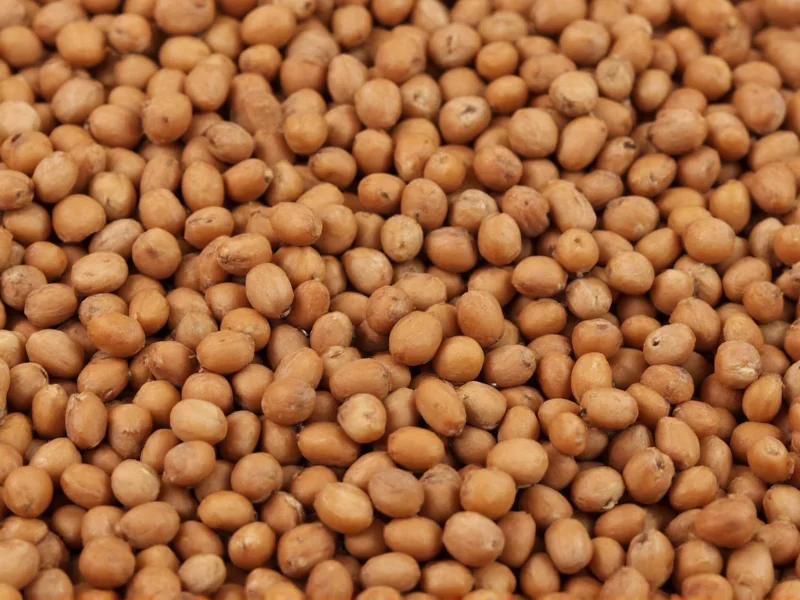Understanding whether are lentils a legume requires examining both botanical classification and culinary usage. While many people confuse legumes with beans specifically, the term actually encompasses a much broader plant family. Lentils, scientifically known as Lens culinaris, represent one of the oldest cultivated pulse crops and serve as a nutritional powerhouse in diets worldwide.
What Defines a Legume Botanically
A legume refers to any plant belonging to the Fabaceae family, characterized by their unique fruit structure: a pod that splits along two seams. This family includes three primary components:
- The plant itself (such as lentil bushes or pea vines)
- The pod (the protective casing)
- The seeds (what we commonly call pulses when dried)
When discussing are lentils considered legumes, it's important to distinguish between the terms "legume," "pulse," and "bean." All lentils qualify as legumes, but not all legumes are lentils. Pulses specifically refer to the dried seeds of legume plants, which includes lentils, dried beans, dried peas, and chickpeas.
Lentils Within the Legume Family
Lentils represent one of approximately 20,000 species in the Fabaceae family. They're classified as pulses because they're the dried seeds of the lentil plant. Unlike some legumes that grow on vines (like peas), lentil plants are small annual bushes that produce lens-shaped seeds in pods, typically containing two seeds per pod.
The question what makes lentils a legume can be answered by examining three key characteristics:
- Nitrogen fixation - Lentil plants work with soil bacteria to convert atmospheric nitrogen into usable plant nutrients
- Pod structure - They grow in characteristic two-seamed pods
- Seed composition - High in protein (about 25% by weight) and complex carbohydrates
Comparing Lentils to Other Legumes
While all lentils are legumes, they differ from other members of the family in several ways. The following table illustrates key differences between common legume types:
| Legume Type | Botanical Name | Seed Shape | Protein Content | Cooking Time |
|---|---|---|---|---|
| Lentils | Lens culinaris | Lens-shaped | 24-26g per 100g | 15-45 minutes |
| Chickpeas | Cicer arietinum | Round, irregular | 19g per 100g | 60-90 minutes |
| Black Beans | Phaseolus vulgaris | Oval | 21g per 100g | 60-90 minutes |
| Peas | Pisum sativum | Spherical | 22g per 100g | 30-60 minutes |
Nutritional Benefits of Lentils as Legumes
Understanding lentils classification as legumes helps explain their impressive nutritional profile. As legumes, lentils offer several health advantages:
- Complete protein source - When combined with grains, lentils provide all nine essential amino acids
- High fiber content - One cup provides about 15 grams of dietary fiber (60% of daily needs)
- Low glycemic index - Helps maintain stable blood sugar levels
- Rich in micronutrients - Excellent source of iron, folate, manganese, and phosphorus
Research shows that regular consumption of legumes like lentils correlates with reduced risk of heart disease, improved digestive health, and better weight management. The nutritional benefits of lentil legumes make them particularly valuable in plant-based diets.
Common Misconceptions About Lentils and Legumes
Several misconceptions persist about lentils and their classification. One frequent question is are lentils beans or legumes. While lentils and beans both belong to the legume family, they represent different subcategories. Beans specifically refer to species within the Phaseolus genus, while lentils belong to their own genus (Lens).
Another common confusion involves the term "pulse." All lentils are pulses (dried legume seeds), but not all legumes are pulses. Fresh legumes like green peas and green beans don't qualify as pulses because they're consumed with their pods while still immature.
Incorporating Lentils Into Your Diet
As versatile legumes, lentils offer incredible culinary flexibility. Unlike many other legumes, most lentil varieties don't require pre-soaking. The difference between lentils and other legumes in cooking time makes them particularly convenient for weeknight meals.
Try these approaches to enjoy lentils:
- Salads - French green lentils hold their shape well
- Soups and stews - Brown lentils dissolve to create thickness
- Dals - Red lentils cook quickly into creamy textures
- Meat substitutes - Black beluga lentils mimic caviar texture
For those exploring plant-based protein sources, understanding lentils as plant-based protein source is crucial. With approximately 18 grams of protein per cooked cup, lentils provide more protein than most grains and many vegetables, making them an excellent foundation for meatless meals.
Are lentils and beans the same thing?
No, lentils and beans are not the same thing, though they both belong to the legume family. Lentils belong to the Lens genus while beans belong to the Phaseolus genus. Lentils are smaller, cook faster, and don't typically require soaking compared to most beans.
Do lentils count as legumes in dietary guidelines?
Yes, lentils absolutely count as legumes in dietary guidelines. Nutrition authorities including the USDA and WHO classify lentils as legumes, recommending them as part of a healthy diet due to their high protein, fiber, and nutrient content.
Are canned lentils still considered legumes?
Yes, canned lentils remain legumes regardless of preparation method. The canning process doesn't change their botanical classification. Canned lentils offer convenience while maintaining the nutritional benefits of legumes, though they may contain added sodium.
Can people with legume allergies eat lentils?
People with legume allergies should consult their allergist before consuming lentils. While lentil allergies are less common than peanut or soy allergies, cross-reactivity can occur among legume family members. Lentils contain different proteins than peanuts, which are also legumes but in a different subfamily.
Why are lentils considered better than some other legumes?
Lentils offer several advantages over some other legumes: they cook faster without pre-soaking, have higher iron content than many beans, contain less indigestible fiber (reducing gas production), and provide a complete amino acid profile when combined with grains. Their versatility in culinary applications also makes them more accessible for daily cooking.











 浙公网安备
33010002000092号
浙公网安备
33010002000092号 浙B2-20120091-4
浙B2-20120091-4